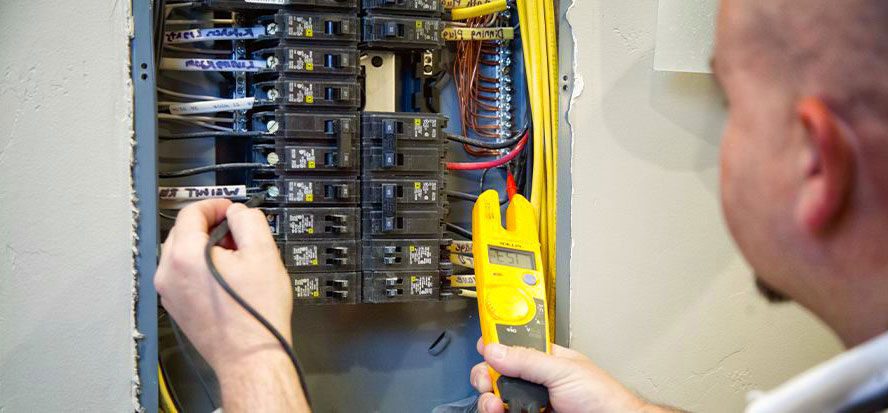HOW TO ADJUST CEILING FAN BLADES PROPERLY
Generally, modern ceiling fans come with a toggle switch. This allows you to reverse the direction of the blades so that they rotate in reverse. Running your ceiling fan in the clockwise helps to circulate the warm air, which keeps your heating costs down.
In reverse, hot air that pools at the very top of your ceiling is pushed towards the room’s outer edges. This forces that air to travel down the walls, directly to the floor. Once the hot air reaches the floor, it then travels to the middle of the room. The ceiling fan blades then suck that air back upward, through the blades again. This entire process helps the entire room’s temperature to remain equalized, saving on the amount of energy used to heat the room.
When the ceiling fan rotates the traditional way, it pushes air downward, causing a wind chill effect. Turn it in the opposite direction and air is pulled upward. Here’s how it’s done:
- Check to be sure ceiling fan is turned off
- Flip the toggle switch
- Turn ceiling fan back on
HOW TO GET THE MOST OUT OF CEILING FANS
Installing ceiling fans the various rooms of your home which you spend a lot of time in is an energy-efficient idea. Not only will you improve comfort-levels throughout the house, but you’ll also save money on heating costs this winter. Here are seven great tips for ensuring that your ceiling fan meets your energy-saving needs:
- A ceiling fan is only useful in a room with 8-foot high or higher ceilings
- A ceiling fan should be installed with blades at least 7 feet above the floor
- Blades should be at least 8 inches below the ceiling, but 10-12 inches gets better results
- Fan blades need to be at least 18 inches away from the walls
- Spending a little more on your ceiling fan will get you one that operates more trouble-free, smoother, and quieter.
- For more efficiency, install more than one in rooms of 18-feet or longer
- Larger rooms require larger ceiling fans
- Rooms less than 225 square feet: fans with 36 to 44-inch diameters work well
- Rooms larger than 225 square feet: fan with 52-inch diameters or more work best
For more information about using ceiling fans properly, visit http://www.millennialliving.com/content/use-ceiling-fans-cut-heating-bills.


